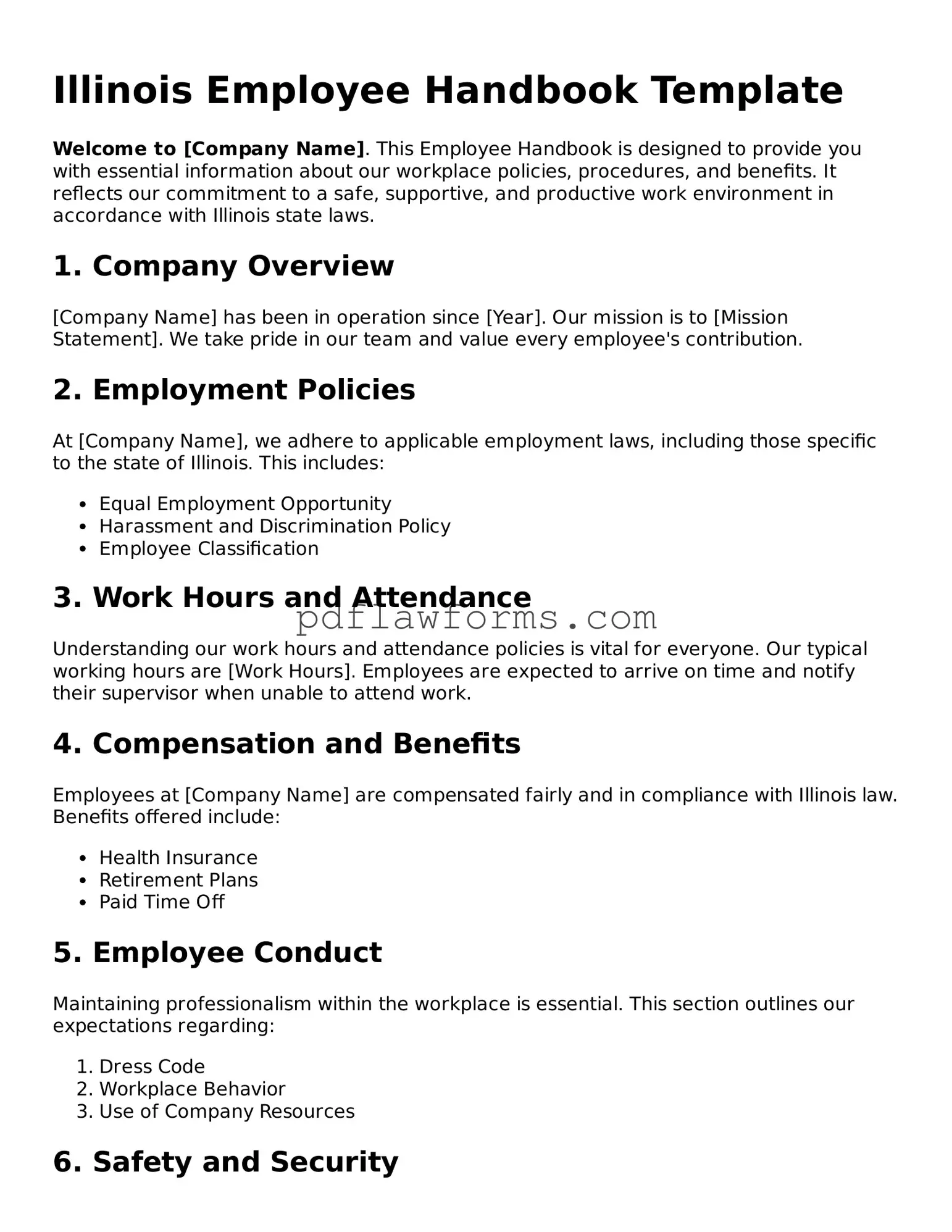Filling out the Illinois Employee Handbook form can seem straightforward, but many people make common mistakes that can lead to confusion or complications later on. One frequent error is not reading the entire document thoroughly before starting. Skimming through the handbook may result in missing essential details about company policies or procedures that are crucial for understanding your rights and responsibilities.
Another mistake often made is providing incomplete information. Employees sometimes rush through the form and forget to fill in all required fields. This can lead to delays in processing or even issues with employment status. It’s important to take your time and ensure that every section is completed accurately.
Some individuals fail to update their information when necessary. Life changes such as a new address, marital status, or emergency contacts can occur, and neglecting to inform your employer can cause complications. Keeping your information current ensures that you can be reached in case of emergencies and that your records are accurate.
Additionally, misunderstanding the company’s policies is a common pitfall. Employees may misinterpret the guidelines regarding attendance, dress code, or workplace conduct. This misunderstanding can lead to unintentional violations of company policy, which might affect job performance or even lead to disciplinary action.
Another mistake is not asking questions when something is unclear. If there are terms or sections of the handbook that are confusing, employees should feel empowered to seek clarification. Failing to do so can lead to misinterpretations that could have been easily avoided.
Some people also overlook the importance of signing and dating the form. This step may seem minor, but it serves as a record of acknowledgment. By not signing, you may be indicating that you have not reviewed the handbook or that you disagree with its contents, which can lead to misunderstandings.
Lastly, ignoring the importance of the handbook as a living document can be a significant mistake. Policies may change over time, and staying informed about updates is crucial. Employees should regularly review the handbook to ensure they are aware of any new policies or changes that may affect their employment.
